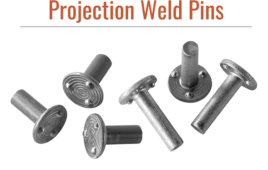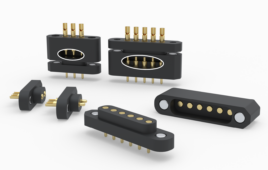Written by Jody Muelaner

A spring pin is an unthreaded mechanical fastener that expands to securely fit in a hole.
Spring pins, also known as roll pins, are designed to be inserted into a hole that has a smaller diameter than the pin. The pin is sprung so that it can decrease in diameter when installed, allowing for a snug fit while exerting a retaining force against the walls of the hole.
When compressed into a hole, the pin exerts a force against the sides of it, as it attempts to expand to its resting diameter. This force results in friction, which retains the pin securely in the hole.
Spring pins are made from a thin sheet of material curved around to form the outer diameter of the pin. They’re typically formed from sheet steel and have a chamfer at each end, enabling them to be easily pushed into the hole.
The components may retain a part on a shaft by inserting the pin through the shaft, perpendicular to its axis. In this case, a pin that’s longer than the diameter of the shaft must be used. These pins may also be used to join by inserting them through concentric holes in two or more components.
There are two main types of spring pins: slotted and coiled pins.
Slotted pins
In a slotted pin, the sheet material is curved around by less than 360 degrees, leaving a gap into which the pin can compress. These types of pins are typically used in lighter-duty applications or where rigidity is required.
Spiral pins
A spiral pin is typically made from a lighter gauge of sheet material than a slotted pin, but it’s curved around by more than two complete revolutions. This results in a strong pin that retains flexibility. This can reduce stress concentrations and fatigue failures.
Spiral pins are used in heavy-duty applications, with cyclic loading.
Alternatives
Grooved pins and cotters serve similar functions as spring pins. They’re also designed to be forced into a hole smaller than the pin.
Unlike spring pins, however, grooved pins and cotters are solid pins. This means that they can withstand higher shear forces. It also means that they may require higher insertion forces and can cause increased stress around the hole.
A grooved pin is a solid pin with grooves swaged along its length, giving it slightly more elasticity than a solid dowel pin. A cotter is a wedge or tapered pin.





Tell Us What You Think!